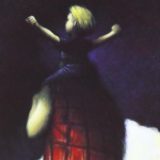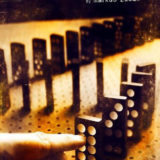What Can Grocery Stores Teach Us about Teen Literacy?
When I was in college, my summer job one year was restocking shelves for a grocery store in Billings, Montana. I worked the graveyard shift, from 11:00 p.m. to 7:00 a.m., unloading pallets of groceries from the truck, wheeling them into the aisles on pallet-jacks, and placing the products in neat little rows on the shelves. I also had to do what was called “facing,” which meant bringing all the groceries to the front of the shelves so that the customer could see them more easily.
Boxes are advertisements, and the more visible the boxes of groceries are, the more likely a customer is to buy them. The same is true of book covers. Publishers spend thousands of dollars for an appealing book cover. In his Self-Publishing Manual, Daniel Poynter summarizes a Wall Street Journal article that says “the average bookstore browser who picks up a book spends 8 seconds looking at the front cover and 15 seconds reading the back.” But they have to see the book cover to pick it up in the first place.
Most classrooms have their books arranged as libraries do, on shelves with the spines facing out rather than the covers. As any good grocery store manager will tell you, you’re losing out on a great chance to advertise your product if you hide the cover. And when the product is books, no advertising can be too much.
Jim Trelease, author of The Read-Aloud Handbook suggests that teachers can use rain gutters in classrooms as an inexpensive way to display books. He has a terrific summary of what teachers can learn from retailers about promoting books to students at the online version of The Read-Aloud Handbook.
Principal Mike Oliver and and Kindergarten teacher Julie Christensen conducted an informal study of the effects of displaying books with the front covers visible and were amazed at the results:
With 19 teachers surveyed, 19 (100%) reported that their students experienced an increased interest and excitement for reading because of the more visible presentation of the books in rain gutters. It was also reported by 16 of the 19 teachers surveyed (84%) that the books displayed in rain gutters were more frequently checked out than the books displayed in more traditional settings (shelves, book carts, etc.). The 3 who did not report a more frequent usage stated that all classroom library books were displayed in gutters so there was nothing to compare against.
The rest of their study can be read online at “The Rain Gutter Literacy Revolution.” Even though their study was done at the primary level, the same principle holds true for junior and senior high students: the more they see, the more they read. And the more they read, the more fluent they become.
My classroom is brick, and there is no wall space for rain gutters, so I’ve had to resort to other ways of displaying books. I use chalk trays to advertise books, and I also ask the school librarian if I can have the leftover cardboard displays that come with the book fair promotional kit.
As you begin to plan for next year, think about how you could arrange books in your classroom to make them more appealing to your students.












